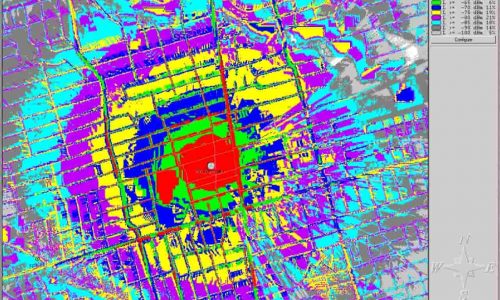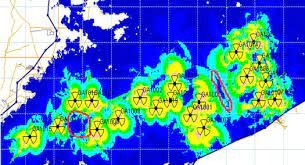As operators migrate to the NG transmission platform, there is a need to revisit the entire gamut of transmission technologies in the context of high speed packet based payload delivery. The NG transmission networks provides a high speed QoS aware packet connectivity, meeting the increased demand of 4G traffic and triple play payload delivery. It maximizes the efficiency of existing fiber optic networks in the backhaul, aggregation and core networks, thereby reducing the operator’s CAPEX and OPEX. This course profiles provides a detailed analysis of the architecture and protocols of NG transmission options like L2 VPNs, NG SDH, Carrier Ethernet MPLS genres, NG Optical Networks and Psuedowires.
Engineers and Technicians involved in the design, planning, deployment, Operations and Maintenance of transmission systems including mobile backhaul.
Participants should be familiar with SDH and Data Communications protocols.
Instructor led classes, case studies and demonstration.
EXPECTED ACCOMPLISHMENTS
On completing this course, participants will be able to:
- Identify the key transmission technologies available for use in modern core networks
- State how ATM provides enhanced support for Operation Administration and Maintenance (OAM) and QoS
- Identify the key attributes of Multi-Protocol Label Switching (MPLS) in the context of Label Switched Paths (LSPs) and Virtual Private Networks (VPNs)
- Describe how MPLS can support Internet Protocol (IP) and Ethernet services
- Identify key services provided by and the main reasons for deploying Carrier-Based Ethernet
- Describe how frame tagging is used within Carrier-Based Ethernets
- Identify the Ethernet technology choices available
- Identify the main interventions for Next Generation SDH (NG-SDH)
- Identify the six key attributes and architecture model of an Optical Transport Network (OTN)
- Describe the architecture and key components of an Automatically Switched Optical Network (ASON)
- Explain how Generalized MPLS (GMPLS) and Transport-MPLS (TMPLS) differ from standard MPLS
- Explain how Constraint-based Label Distribution Protocol (CR-LDP) can be used as part of the call control model
TARGET AUDIENCE
This course primarily intended for technical personnel involved in the planning, design, management or support of SDH Networks.
COURSE DETAILS
Introduction
- Evolution of transmission networks
- PDH and SDH
- X.25, Frame Relay and ATM
- Modern transmission techniques
Virtual Circuits
- Data and IP VPNs
- Frame relay
- ATM
- Mapping ATM cells into SDH
- MPLS VPNs
- Label distribution protocols -CR-LDP
- Label distribution, advertisement and retention modes
- Routing
Carrier Ethernet (CE)
- Metro Ethernet Forum (MEF) definition of CE
- UNI and Ethernet virtual connection
- CE services
- Service profiles
- 802.1Q and 802.1ad VLAN tags
- Provider Backbone Bridging (PBB)
- Ethernet label switching
- PBB-TE and MPLS-TP transport options
- Ethernet OAM functionality
- MEPs and MIP in Ethernet OAM
- Messages used in CFM and PM Operation
Next Generation SDH
- SDH nodes
- SDH mapping vs. multiplexing
- SDH frame structure (STM)
- OAM, timing and protection
- NG SDH interventions
- LCAS
- Virtual concatenation (VCAT)
- Generic framing procedure (GFP)
- NG-SDH overheads
- NG-SDH signaling
- Ethernet frame encapsulation
- Buffering in NG-SDH nodes
Wavelength Division Multiplexing (WDM)
- ITU WDM frequency grids
- CWDM vs. DWDM
- Open and embedded systems
- Optical amplifiers
- Single stage and two stage amplifiers
- Optical cross connect
- Optical ADM
- Optical line systems
- WDM network nodes
- WDM in metropolitan networks
- WDM in access networks
Optical Transport Network (OTN)
- OTN Standards and Architecture
- OTN Network Layered Structure
- Optical Channel (OCh) Layer Network
- Optical Multiplex Section Layer Network (OMS)
- OTN Frame Structure
- Layer Network Management Requirements
- OTM Overhead Signal (OOS)
- OTN Trails
- Virtual Concatenation (VCAT)
- Interconnecting Non-OTN Devices
- Forward Error Correction (FEC)
- Protection Techniques
MPLS in Optical Networks
- Intelligent Optical Network Standards
- Automatic Switched Transport Network (ASTN)
- ASON Layered Network Model
- Generalized Multi-Protocol Label Switching (GMPLS)
- Traffic Engineering (TE) Label Distribution Protocols
- Routing and Call Model using CR-LDP
- Transport MPLS
- T-MPLS Clients and Servers
- T-MPLS and Transport Technologies
Pseudo Wires
- The Purpose of Pseudo Wires (PWs)
- Pseudo Wire Standards and Concerns
- PW Protocol Layers
- PWE3 over IP
- PWE3 over MPLS
- TDM over IP Pseudo Wires
- IETF TDMoIP
- PW Stitching
- Virtual Circuit Connectivity Verification













